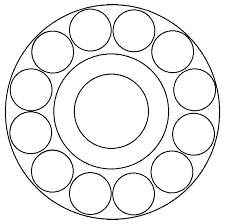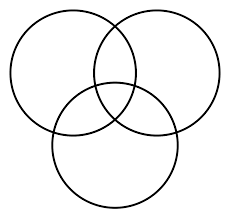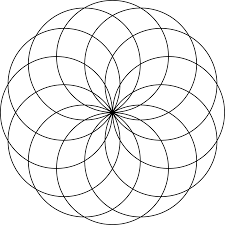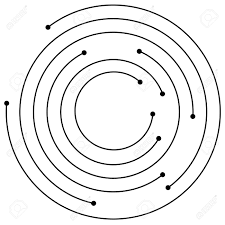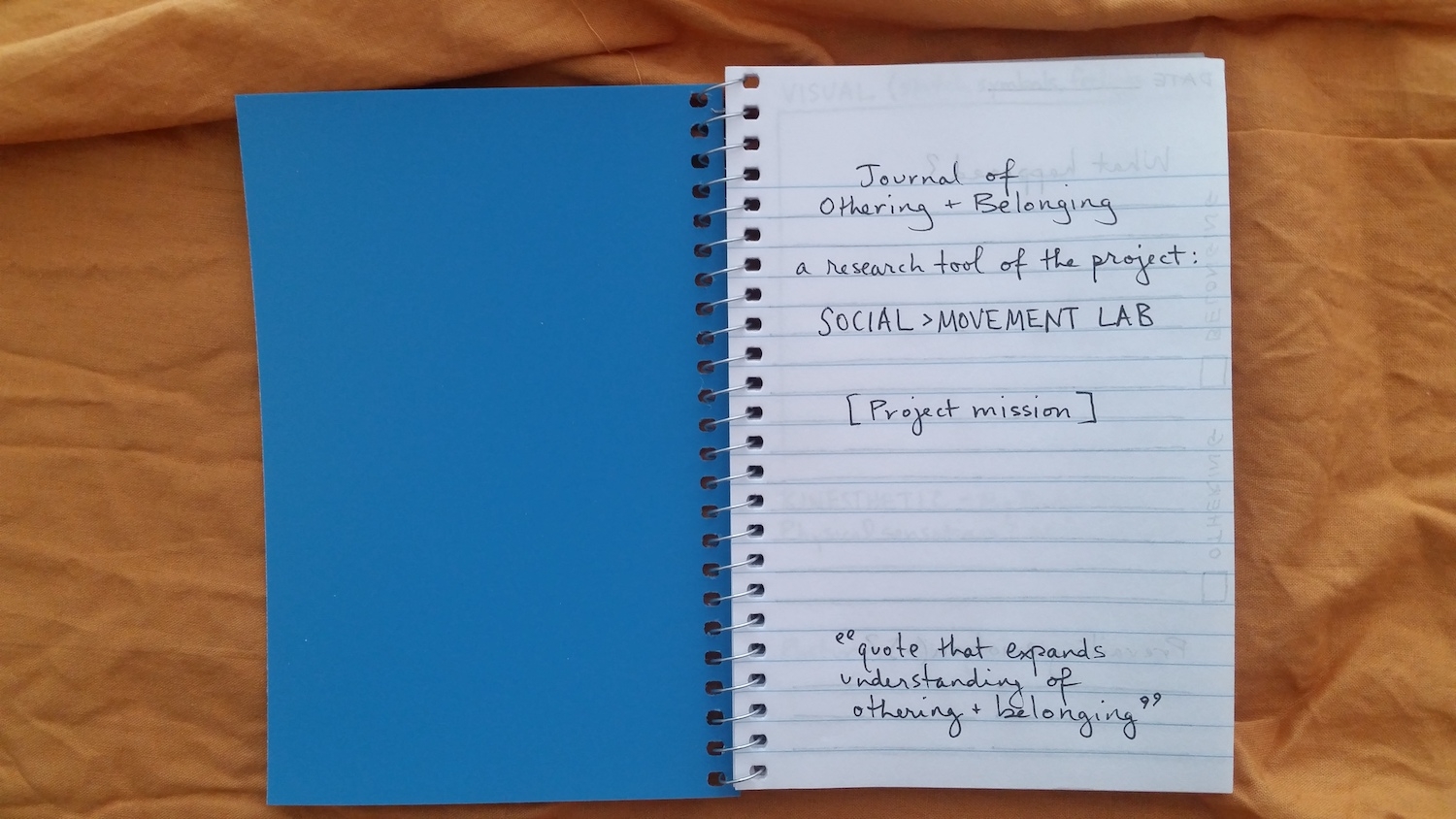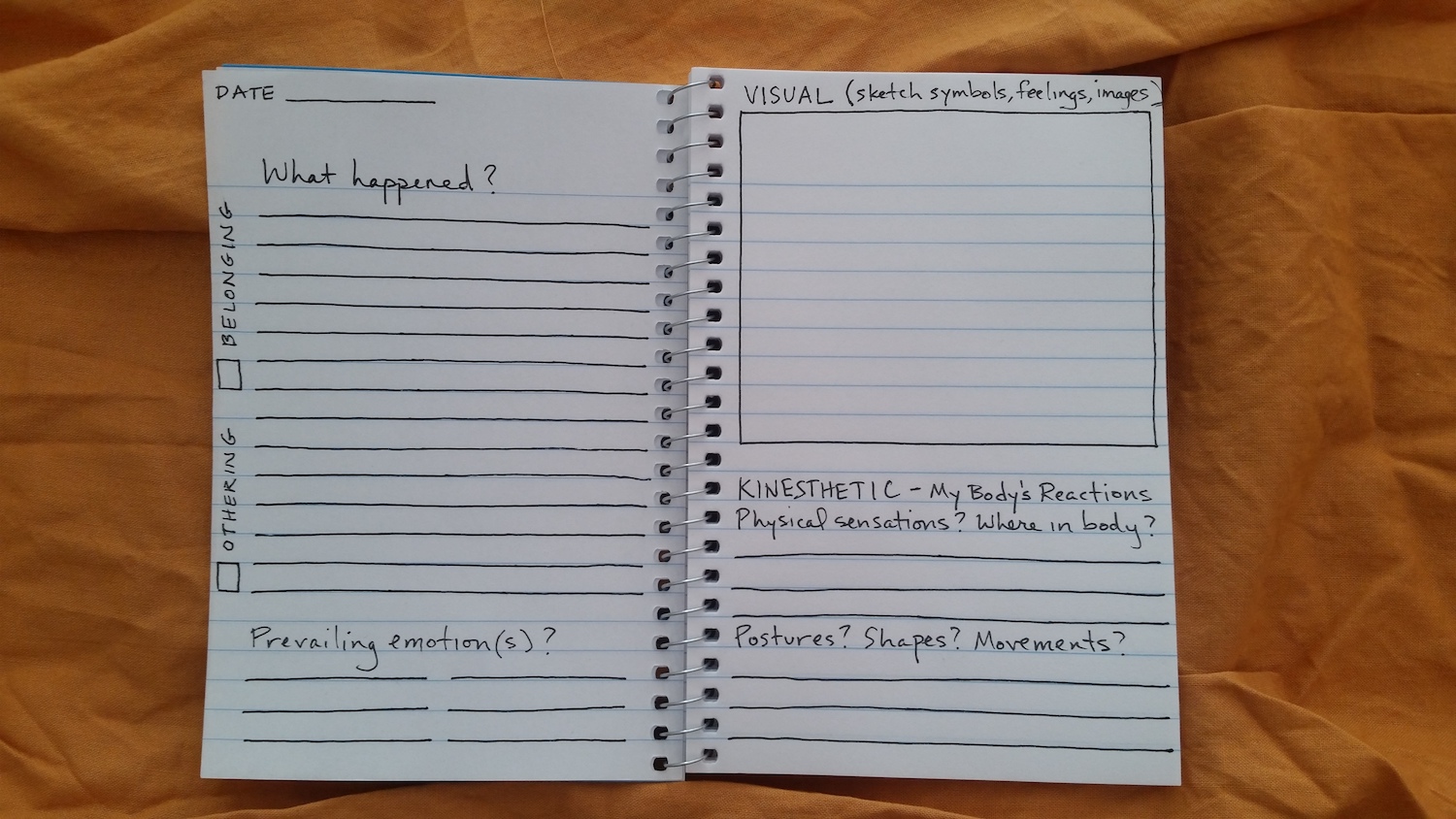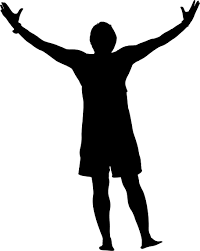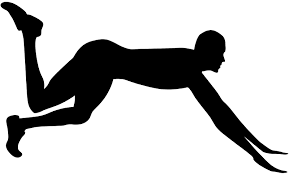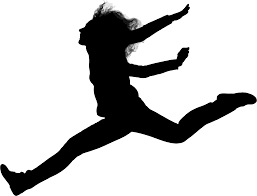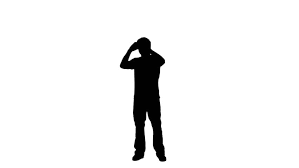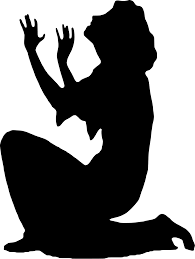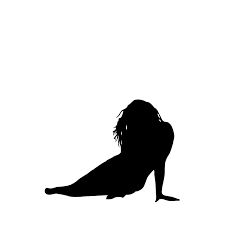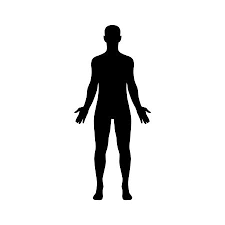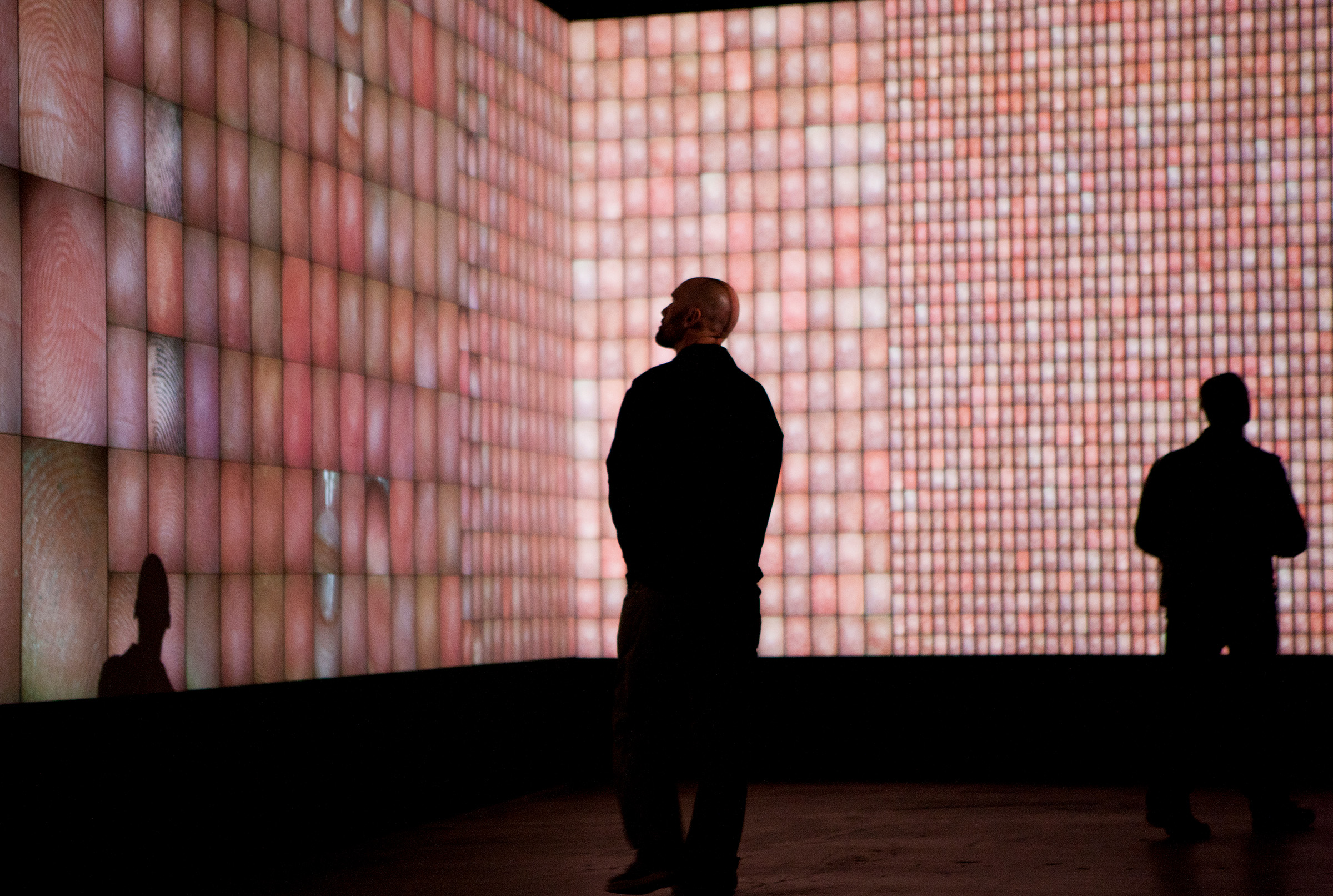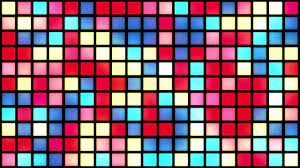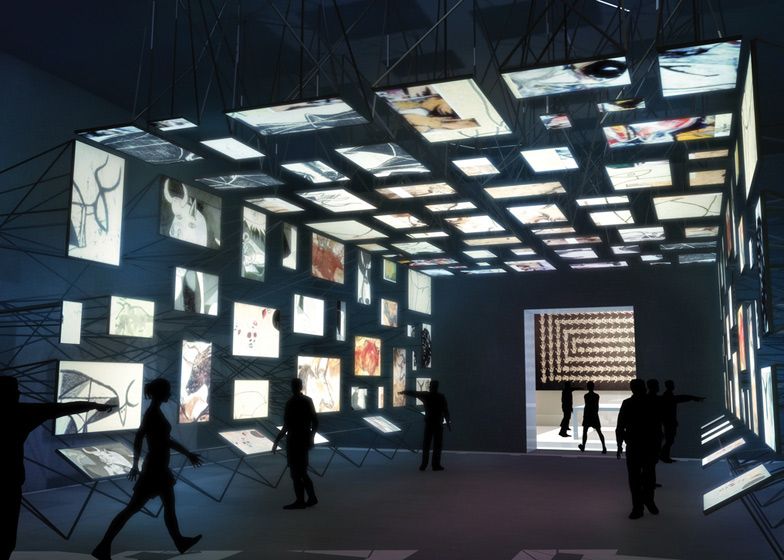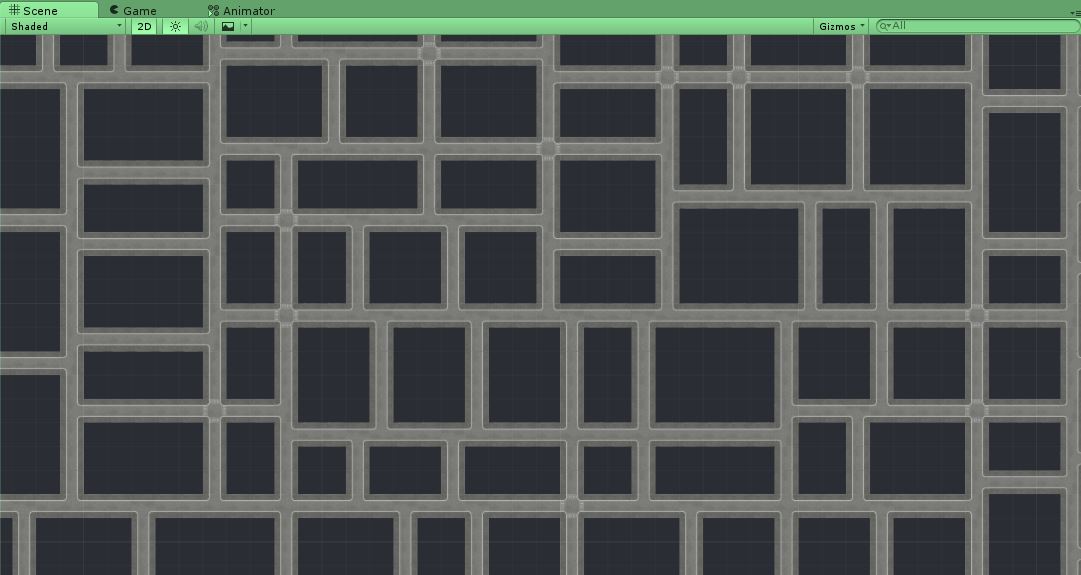Social >Movement Lab
Social >Movement Lab combines the superpowers of curiosity, story-sharing, listening, movement, imagination, and co-creativity to instigate meaningful dialogues, to reveal deeper understandings, and to birth belonging.
Work In-Process: Vision + Design + Prototypes
SUMMARY
Paid Community Researchers share with one another their observations and experiences of Othering and Belonging. With key words from their stories, they are guided to respond with physical movements and body shapes. These movements and shapes then are transformed to anonymous digital silhouettes. These silhouettes, along with physical journals, audio stories, drawings, choreography and other outputs, make the creative material for a public installation that births new awarenesses around Othering vs the Belonging.
WHY?
Othering vs Belonging
Othering is the source of our most wicked problems, whether political, social, environmental. In their article "The Problem of Othering: Towards Inclusiveness and Belonging," john a. powell and Stephen Menendian define Othering as "a set of dynamics, processes, and structures that engender marginality and persistent inequality across any of the full range of human differences based on group identities." In its simplest form, Othering is when we believe "our way is right, their way is wrong," "i am better, you are worse." If we can find ways to eradicate Othering in humans and within the structures run by humans, we can move towards universal Belonging. To activate these radical shifts in our social fabric, we must better understand Othering and Belonging.
How do Othering and Belonging show up in our most routine human relationships?
What are ways to encourage deeper self-reflection, empathy, and cultural humility?
How and why do symbols and rituals that embed Belonging become tools to fuel Othering?
How does systemic exclusion prevent universal participation in imagining a collective future?
When and how does Othering at the human level morph into Othering at the systemic level?
What pathways exist to unveil systemic Othering and inject institutional accountability?
What does systemic cultural humility and inclusion look like?
These questions represent a deep curiosity i have had since before i could understand anything beyond my feelings of shame for having a facial anomaly, or my feelings of confusion at the "important difference" between Tyler and Tyrone. Still i peel away layers of naïveté every day. Using this project as a tool, i am eager to deepen my own and others' learning, to co-discover new approaches, and to expand the sense of Belonging in East Bay communities and beyond.
WHAT?
Stories > Movements > Artistic Co-Creations
Humans will be paid as community research artists and scientists. They each will be given a Journal of Othering & Belonging. This custom-designed, professionally printed notebook is a place to record daily observations and experiences of Othering & Belonging, from multiple perspectives. The current prototype being tested includes verbal, emotional, visual and kinesthetic documentation options.
On a weekly basis for four weeks, Community Researchers form a Circle to share their stories of Othering & Belonging with one another. Ideas to explore could include (1) when and where individual othering morphs into structural othering, (2) why symbols and rituals of belonging become tools to enforce othering, and (3) what is each Circle’s collective vision of inclusion. While maintaining Researchers’ privacy, noninvasive systems of documentation gather findings. (Consent underlies every element of Social >Movement Lab.)
Will patterns emerge?
Will definitions change over time?
How will the sense of belonging evolve within the group?
How do the Circles compare and contrast with one another?
“The fact that we are here and that I speak these words is an attempt to break that silence and bridge some of those differences between us, for it is not difference which immobilizes us, but silence. And there are so many silences to be broken.”
For the next four weeks, Community Researchers form Movement Club. In response to my structured facilitation around anonymous key words and images from the journal stories, and possibly other stories sourced from the public, Researchers move their bodies. For example, verbs and adjectives extracted from the Othering and Belonging stories elicit movement impulses. Curricula is rooted in my yoga, meditation, and dance trainings (although a casual observer may not recognize any of those modalities in this less formal, more playful experimental style of facilitated movement).
Movement Club is not about creating visual choreography, but rather focuses on increasing awareness of internal sensations and what the body wants to do with a given prompt. Ultimately, when the Community Researchers are ready, we record the shapes and movements and transform them to digital silhouettes. Being recorded always is optional, and can be done in ways that maintain anonymity. Reason #26 why i love working with silhouettes.
The digital silhouette images will be the artistic foundation of an immersive environment (e.g., large grid of various black body silhouettes on solid color backgrounds, on each of four walls). Imagine this! The images derived from shapes and movements with Othering stories will be displayed. Then each silhouette tile in the grids change to images derived from shapes and movements with Belonging stories. Will the difference be obvious, either visually or viscerally?
By the end of Movement Club, Researchers are ready to perform live! They are guided to either co-choreograph a performance or prepare for an improvisational piece. i have frameworks to facilitate either method, depending on group desires. Using elements of force, time, and space, the group's shapes and movements spawn from their felt senses of Othering & Belonging.
Throughout the multi-phase project, a huge quantity of creative material is generated. Possibilities for public exhibition are endless.
Stories can become audio and video files.
The public can contribute stories of Othering and Belonging via online platforms and in-person participatory research stations.
Journals themselves can be displayed en masse (e.g., Othering stories from the ceiling, Belonging stories outreaching in an embrace from the wall).
Elements of journals can spawn installations (e.g., emotions as data visualizations, sketches of symbols and images, body charts of physical sensations, etc.).
Community Researchers can develop tangible objects from their shapes and movements (e.g., shadow tracings), displayed digitally or otherwise.
Movement Club can generate sounds to amplify the rhythms and irregularities of Othering and Belonging.
Community Researchers can develop virtual reality objects to produce a VR immersion of silhouettes.
Online and analog portals can gather artistic contributions from the public, while forming a repository of Othering & Belonging.
Although i see clearly the design, processes, mediums, and formats to be used in the exhibition, i absolutely am open to and expecting new ideas born from the co-creative process and stakeholder feedback as the project progresses.
WHO?
Circles of 12 > Venn Diagram > The S'MOB
The core of Social >Movement Lab is its humans. East Bay residents of all kinds are invited to apply to be paid Community Researchers, and once selected, form three groups of 12. (12 is based on work of Edward Hall, Priya Parker, and others.) Using the right outreach methods are crucial to inform residents of the opportunity. Collaboration with community partners, such as neighborhood coalitions and social justice organizations, guides outreach and selection. Time will be invested in getting to know the communities upfront. Hyperlocal geography makes meetings most accessible and increases potential for sustaining meaningful relationships.
Could "decision-makers" in the systems and structures of Othering be engaged to join us?
How might we welcome and encourage all spoken languages?
What are benefits of more diverse versus less diverse groups?
i am not the most appropriate facilitator. A cohort of Community Leaders co-creates with me the framework for the Circles of 12, including structure, agreements, and prompts. They are experienced in supporting diverse groups to maintain safe, respectful space. My Pathways to Equity Fellowship begins September 2018. i am strengthening my muscles in active listening, participatory public research, personal self-reflection, and responsive organizing methods - through the lens of equity and justice.)
Some Community Researchers may not wish to continue into Movement Club. (Payment milestones correlate with levels of participation.) The Circles unite for Movement Club, specifically designed for every body, regardless of perceived skill or ability.
The Researchers then embark on Artistic Co-Creation. (Those who do not participate in Movement Club are welcomed back into the mix.) By now, a "Social Movement of Belonging," or S'MOB, is emerging. The mob that so often is a mechanism of Othering transforms into an exploration of "Movements Of Belonging." What might a Social Movement of Belonging look like, act like, move like?
Community Researchers are supported to step fully into the role of Artist. With past projects, i have seen hundreds of participants enter as self-defined "non-artists" and exit knowing they are artists. In Social >Movement Lab, these community artists become stewards of Belonging. The co-creation process includes ideating, designing, and implementing ways to Expand the Circle at the public exhibition. An important element to me is that the artistic outcomes contain ways to invite real public interaction in deeper ways, whether by (1) contributing artistic material that enhances the artwork in real-time, (2) offering their own ideas for application, adaptation, and/or expansion of the project, or (3) receiving resources to implement [elements of] the project in their own worlds.
We celebrate and honor the Community Researchers and their efforts.
HOW?
Eyes & Ears > Sensing Kin > Public Imagination
From the onset, trusted longtime community resident organizers are being consulted for feedback on each phase of Social >Movement Lab - and are being compensated for their wisdom.
After being introduced to the concepts of Othering & Belonging, Community Researchers are tasked with documenting examples in their day-to-day lives.
What will be the impacts of this new awareness muscle being exercised each day?
Will their own definitions of Othering & Belonging transform? Will their actions begin to change?
On a weekly basis, the Researchers choose which stories to recount to the Circle. Facilitators guide the group in ways of sharing and ways of listening that foster a sense of safety and respect, while aiming for collective empathy. Every Researcher arrives to the Circle with a different context, and offer something of tremendous value in sharing their stories.
What will be the experience for each Researcher of being listened to, of being seen?
What will be the obstacles to sharing these stories? By opening eyes and ears, will minds open, too?
How will this meta-activity of Belonging impact their journal entries and sharing?
“When the whole person, including body, emotions, and mind, is involved in a movement, we can experience ‘movement feeling.’ This feeling cannot be named. It is not specific like fear, hunger, pain, rage. It can be identified only by its qualities. For example, a dance called ‘Slow Dance’ can express all the emotions associated with slowness without being limited to any single one. It is an abstraction. Abstract form is universal. Different people have different daily experiences of slowness, but all can understand the meaning of ‘slow.’ ”
The journal provides space to record kinesthetic experiences, in the form of physical sensations, postures, and movements. This initial practice of noticing "felt senses" is a warm-up for the second phase of the project, Movement Club. Movement - like art, play, food - is an innate human requirement for well-being and a universal system of expression. Often we can communicate in body postures and movements what words cannot, and we can hear ourselves through different ears. All humans have a sense of movement, or kinesthetic sense. Other senses (sight, sound, touch) give us information about the world around us, while the kinesthetic sense tells us what is going on within ourselves. What happens when we shift our awareness from the external visual to the internal kinesthetic?
These movement sessions are playful yet insightful. We start with very basic movement activities and build towards integration of themes from the journals. For example, the first session's prompts may include words like "wiggle," "stretch," and "twist." Eventually, we add the adjectives and verbs from the journal entries to derive shapes and movement impulses. The trust grows with each phase.
As the movement facilitator, I utilize my training as a professional coach to support someone through any intense moments, though my light and experimental style provides participants with the experience best-suited for them.
Community Researchers use all the creative materials produced to co-develop artistic installations and performances. Starting with the general concept and i've envisioned, i guide the group through designing and testing various inputs (e.g., colors, sounds, patterns, rhythms, layouts). Adapting co-creation approaches i've used in Public Imagination Collective, American Arts Incubator, Art of Play, Mad Libs in Motion, Knot Network, and other initiatives, we make art together. These artistic outputs are customizable to partner goals, and ready for exhibition, public interruption, and more!

